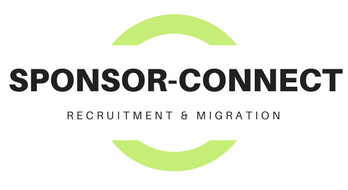About Training Visa (subclass) 407
Our winning approach for over 12 years!
The 407 Training Visa (previously known as the Temporary Activity Visa – Training and Research Stream) is an Australian visa that allows individuals to undertake occupational training or professional development activities in Australia. To prepare your own training plan for the 407 Training Visa, you can follow these general steps:
- Identify your training objectives: Determine the specific skills or knowledge you aim to acquire or develop during your training period in Australia.
- Research training providers: Where classroom / course content is required, search for appropriate organizations, institutions, or companies in Australia in the area of your intended employment that offer training programs relevant to your objectives. Ensure that the training provider is registered and approved to offer training for the 407 visa.
- Contact potential training providers: Reach out to the training providers to discuss your training goals and requirements. Inquire about the programs they offer, their duration, and any prerequisites or entry requirements.
- Customize your training plan: Based on your objectives and the available training programs, work with the training provider to develop a customized training plan. The plan should outline the specific activities, tasks, and projects you will undertake during your training period.
- Include a schedule: Create a schedule that outlines the start and end dates of your training program, as well as the duration of each training activity or module. Ensure that the total duration of the training plan meets the requirements of the 407 visa, which is typically up to two years.
- Define learning outcomes: Clearly define the learning outcomes or competencies you expect to achieve by the end of each training activity. This could include specific skills, knowledge areas, or professional standards you aim to acquire.
- Provide details on supervision and mentoring: Describe the level of supervision and mentoring you will receive during the training program. This could include the name and qualifications of your supervisor or mentor, as well as the frequency and nature of their involvement.
- Include a budget: Outline the financial aspects of your training plan, including details on any fees or costs associated with the training program, accommodation, transportation, and living expenses. It’s important to demonstrate that you have sufficient funds to support yourself during your stay in Australia.
- Write a statement of support: Prepare a statement explaining why the training program is important for your career development and how it aligns with your long-term goals. This statement should demonstrate your commitment to completing the program and returning to your home country at the completion of your training program.
- Review and finalize: Review your training plan to ensure it meets all the requirements and guidelines set by the Australian Department of Home Affairs. Make any necessary revisions and finalize the plan before submitting your visa application.
Remember that the specific requirements for the 407 Training Visa may vary, and it’s important to consult the official Australian government website or seek professional advice for the most up-to-date and accurate information.
Things to Note
Note: Your Training Plan is written for an audience of 1!
The purpose of the training section in the training plan for the 407 Training Visa is to provide a clear explanation of the objectives and benefits of the training program for both the trainee and the sponsoring organization. Here’s an example of how you could structure this section:
Purpose of the Training:
The purpose of this training program is to [insert purpose based on the nominated stream]:
- Stream One: Meet specific registration or licensing requirements
- Stream Two: Improve skills in an eligible occupation
- Stream Three: Capacity building overseas
For Stream Two – Improve skills in an eligible occupation: The purpose of this training program is to enhance the trainee’s skills and knowledge in the field of [insert eligible occupation]. By participating in this program, the trainee will acquire advanced techniques, industry best practices, and specialized expertise that will contribute to their professional growth and proficiency in their occupation.
Benefits for the Trainee:
The trainee will benefit from this training program in the following ways:
- Skill Enhancement: The program will provide the trainee with an opportunity to develop advanced skills and knowledge in their chosen field. This will enable them to expand their expertise and stay updated with the latest industry trends and practices.
- Career Advancement: The training program will have a positive impact on the trainee’s professional development and career prospects. It will equip them with the necessary skills and qualifications to take on higher-level roles and responsibilities within their occupation, both in their home country and potentially internationally.
- Knowledge Transfer: Upon completion of the training program, the trainee will be able to share their newly acquired knowledge and skills with their colleagues and subordinates. This will contribute to the overall growth and improvement of the organization.
Benefits for the Sponsoring Organization:
Our organization will benefit from this training program in the following ways:
- Enhanced Service Quality: The trainee’s participation in the program will enable them to acquire advanced skills that can be directly applied to our operations. This will result in an improved service quality for our customers, as the trainee will be equipped to handle complex tasks and provide more specialized assistance.
- Internal Skill Development: The trainee’s enhanced skills and knowledge will allow them to train and mentor junior employees within our organization. This knowledge transfer will foster a culture of continuous learning and professional development, benefiting the growth and performance of our entire workforce.
- Competitive Advantage: By investing in the professional development of our employees, we aim to strengthen our competitive position in the market. The trainee’s expanded skill set will contribute to our organization’s ability to offer a broader range of services and meet the evolving needs of our customers.
Remember to tailor the purpose and benefits of the training program to your specific situation and nominated stream. Provide specific examples and articulate how the training program will contribute to the trainee’s growth and the organization’s objectives.
Position Description and Suitability are Essential
Describe the Position
The training plan should include a brief description of the nominated position, including duties and tasks, and explain how the position fits within your business. In particular, you must specify:
- which eligible occupation the nominated position relates to; and
- which relevant Australian and New Zealand Standard Classification Occupation (ANZSCO) code the position falls under.
For example, if the nominated position is for a software engineer, this occupation is on the Medium and Long-term Strategic Skills List with a corresponding ANZSCO code of 261313. Therefore, the skills and tasks outlined in your position description should be consistent with those under ANZSCO code 261313.
To support this, you could provide job descriptions for the position the nominee is currently employed in and the position the nominee intends to train for.
Demonstrate the Nominee’s Suitability
It is important to demonstrate that the nominee has the skills, qualifications, and experience required for the nominated role. In particular, if you are nominating someone under stream two, you must show that:
- the nominee has at least 12 months of full-time experience in the same or related role; and
- the experience was gained within the last 24 months before lodgement of the nomination.
For example, you may include a table outlining the key positions that the nominee has held in the business and are relevant to the nominated position. You could also refer to the nominee’s resume to demonstrate the qualifications and skills they bring to the role.
Skills Gap Audit and Analysis
In addition to demonstrating the nominee’s suitability for the role, you will need to provide an assessment of the:
- nominee’s current level of skill in a relevant role;
- core skills the nominee currently lacks; and
- skills and knowledge to be gained in the training role.
This analysis will be carefully assessed by the DOHA officers and should form the basis of your training plan. Even where your nominee has worked for your business for several years, you will need to explain how the nominee will develop and progress to the nominated occupation.
Tailored Tasks and Outcomes
NOTE: Do NOT use generic or templated plans – Nomination will fail!
Training Tasks:
In the training plan, it is essential to outline the specific tasks or modules that the nominee will undertake during the training program. The tasks should be designed to increase in difficulty and complexity over time, allowing the nominee to progress and develop a higher level of skills. See the example table that can be included in the training plan below.
In the table below, you can include the description of each task or module, the nominee’s current skill level, the required skill level, the delivery method of the task (e.g., on-the-job training, classroom training, practical exercises), the assigned supervisor or trainer, the duration of the task, the start and completion dates, and the status of each task.
Training Outcomes:
The training plan should also clearly identify the outcomes that the nominee will achieve upon completion of the training program. These outcomes should be aligned with the objectives of the training and demonstrate the enhanced or additional skills the nominee will gain. Additionally, you can specify the tasks or duties the nominee will become competent in after completing the training. The specific outcomes will depend on the nature of the training program and the nominated position.
Key Takeaways:
Preparing a comprehensive training plan is crucial for the subclass 407 training visa application. Ensure that the plan includes:
- Clear and progressively challenging training tasks or modules.
- A separate table or schedule outlining the description, delivery method, supervisor, duration, start and completion dates of each task.
- Training outcomes that highlight the enhanced or additional skills the nominee will gain and the tasks or duties they will become competent in.
Remember to tailor the training plan to your specific circumstances and the requirements of the nominated stream. Providing a well-structured and detailed training plan will strengthen your visa application and demonstrate the genuineness of the training opportunity.
Sample Table
| Task | Description | Current Skill | Required Skill | Training Delivery Method | Supervisor | Duration | Start Date | Completion Date | Status |
|---|---|---|---|---|---|---|---|---|---|
| Task 1 | Description of the first training task or module | Basic | Intermediate | On-the-job training | John Smith | 2 weeks | 10/07/2023 | 24/07/2023 | In Progress |
| Task 2 | Description of the second training task or module | Intermediate | Advanced | Classroom training | Sarah Johnson | 1 week | 31/07/2023 | 07/08/2023 | Planned |
| Task 3 | Description of the third training task or module | Intermediate | Advanced | Practical exercises | David Thompson | 3 weeks | 14/08/2023 | 04/09/2023 | Planned |
| Task 4 | Description of the fourth training task or module | Advanced | Expert | Mentoring and shadowing | Emily Wilson | 4 weeks | 11/09/2023 | 09/10/2023 | Planned |


One thought on “How to write your Training Visa 407 Training Plan”
Comments are closed.